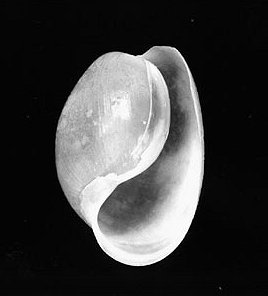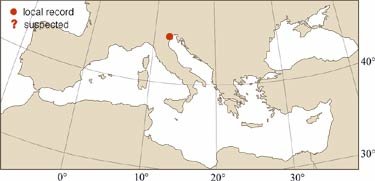
|
Relevant Synonyms
Misidentification
|
|
| photo: P. Pravlis / Coll. K. Schaefer |
|
SHORT
DESCRIPTION
color :
shell whitish with reddish tinge externally and internally. Callus usually white, but slightly creamy in some specimens. Soft parts from grey to light brown and slightly reddish in ground color. Many dark brown spots (of various sizes) distributed over entire animal, especially on the dorsal surface, and concentrated on the edges of cephalic and pallial lobes. Orange pigment is scattered over all, and distinct white spots are concentrated along the lobe margins.
common size :
shell up to 11 mm in length; entire animal up to 33 mm. |
DISTINGUISHING CHARACTERISTICS
BIOLOGY / ECOLOGY
habitat :
lives in shallow and sheltered areas and lagoons, mainly in muddy bottoms with seagrass and green seaweeds of Chaetomorpha and Ulva. |
|
1st
Mediterranean record
|

|
|
DISTRIBUTION
|
ESTABLISHMENT SUCCESS
speculated reasons for success :
|
|
|
MODE OF
INTRODUCTION |
IMPORTANCE TO
HUMANS |
|
KEY
REFERENCES
|
|
|